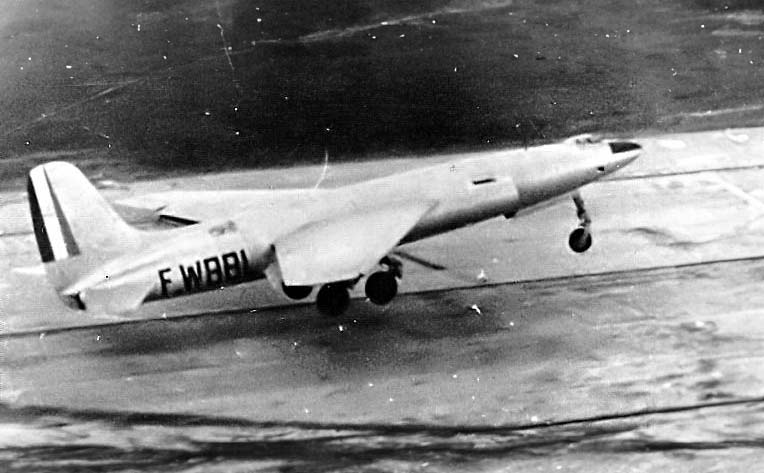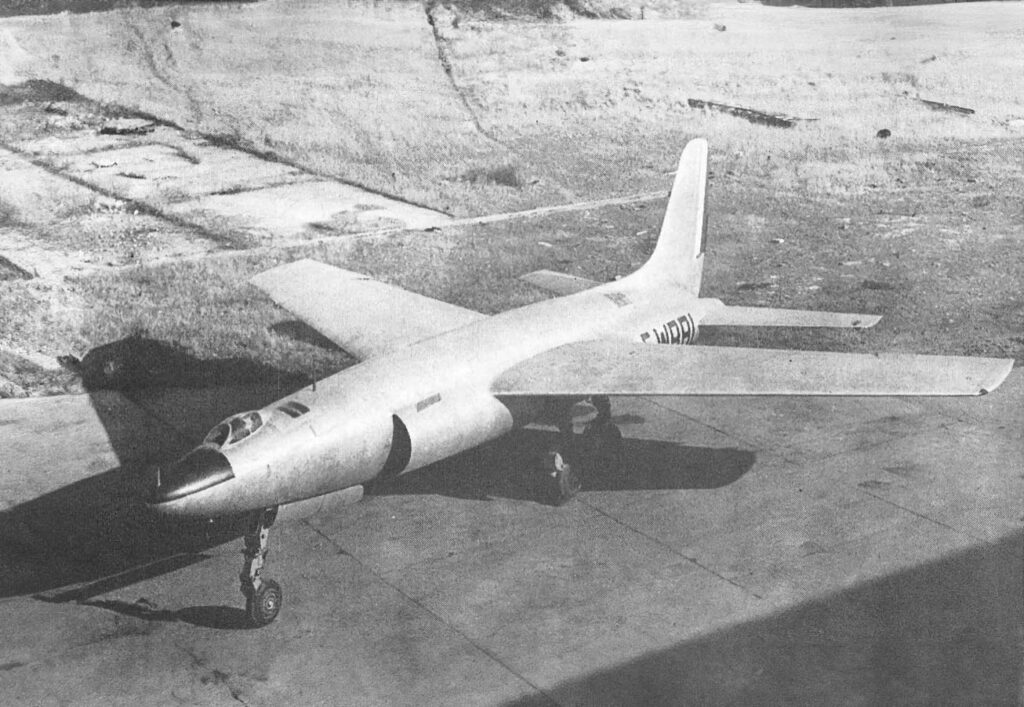The SNCASO SO.4000 was a French experimental jet bomber, pioneering in its use of swept wings and tailless design.
In brief
The SNCASO SO.4000 was an ambitious French project aimed at creating a high-speed jet bomber in the early post-World War II era. It featured innovative design elements, including a swept-wing configuration and a tailless design, setting it apart from contemporaneous aircraft. Despite being a technological pioneer, only one prototype was completed and flown, and the project did not proceed to full-scale production. The SO.4000 represented a significant step in France’s aviation capabilities, showcasing advanced aerodynamic concepts and jet propulsion, although it ultimately served more as a research platform than an operational bomber.
The SNCASO SO.4000 was a testament to the innovative spirit of French aviation in the post-war period, embodying the rapid advancements and ambitious aspirations in jet technology and strategic bomber development.

History of the Development of the SNCASO SO.4000
In the immediate aftermath of World War II, France sought to reestablish its aviation industry and military capabilities, particularly in the strategic bomber domain to ensure national security and technological sovereignty. The development of the SNCASO SO.4000 was initiated against this backdrop, driven by the need for a modern jet-powered bomber that could deliver strategic payloads over long distances and at high speeds.
The program was launched by the French nationalized aviation company SNCASO (Société Nationale de Constructions Aéronautiques du Sud-Ouest). The SO.4000 was designed to incorporate several cutting-edge features, including swept wings and a tailless design, which were relatively novel at the time. The first flight occurred on 15 March 1951, symbolizing France’s post-war reemergence in advanced aircraft development.
The SO.4000 project was part of a broader effort to propel France to the forefront of the aviation technology, reflecting the era’s strategic imperatives and the competitive international environment. Despite the promising start, the project faced numerous challenges, including technical complexities and shifting strategic priorities, which eventually led to its discontinuation.
Design of the SNCASO SO.4000
The SNCASO SO.4000’s design was marked by several innovative features. It was one of the early adopters of a swept-wing configuration, aimed at reducing drag and improving performance at high speeds. The aircraft also featured a tailless design, which was expected to offer aerodynamic efficiency and reduce structural weight.
The SO.4000 had a length of approximately 23 meters and a wingspan of around 20 meters. It was powered by four turbojet engines, initially intended to be the Rolls-Royce Nene before transitioning to French-designed engines. The bomber was equipped with retractable tricycle landing gear and was designed to carry a significant payload of conventional or nuclear weapons.
While the design was forward-looking and had potential performance advantages, it also posed considerable developmental challenges. The tailless configuration, in particular, presented stability and control issues. Additionally, the ambitious nature of the project and the reliance on emerging technologies resulted in complexities that hindered the aircraft’s development and testing process.
Performance of the SNCASO SO.4000
The SO.4000’s performance characteristics were geared towards high-speed, long-range strategic bombing missions. While comprehensive performance data is limited due to the prototype’s early termination, the aircraft was expected to achieve significant speed and altitude capabilities, aligning with the strategic bomber requirements of the era.
The aircraft’s advanced aerodynamic design aimed to provide superior speed, with projections indicating a maximum speed in the range of high subsonic levels. The range and service ceiling were also intended to be competitive, allowing the SO.4000 to penetrate enemy defenses and deliver its payload effectively.
Variants of the SNCASO SO.4000
The SO.4000 project primarily revolved around the development of the initial prototype, with no subsequent production variants due to the program’s cancellation. However, the design and technological insights gained from the SO.4000 informed other projects and developments within the French aviation industry.

Military use and combat of the SNCASO SO.4000
The SNCASO SO.4000 did not see military use or combat as it did not progress beyond the prototype stage. Its primary role was as an experimental platform, contributing to the body of knowledge and experience in advanced jet bomber design and technology. The project’s cancellation before mass production or operational deployment meant that it did not directly influence active military strategies or participate in conflicts.
The SNCASO SO.4000 remains a symbol of post-war French ambition and innovation in the field of aviation. While it did not fulfill its intended role as a strategic bomber or enter into service, its development represented a significant stride in jet technology and aerodynamic design. The lessons learned and the technological advancements from the SO.4000 project echoed in subsequent French and international aircraft developments, underscoring its importance as a stepping stone in the evolution of military aviation. Despite its brief history, the SO.4000 is remembered as a bold endeavor that embodied the spirit of an era characterized by rapid progress and far-reaching aspirations.
Back to the experimental aircraft section.